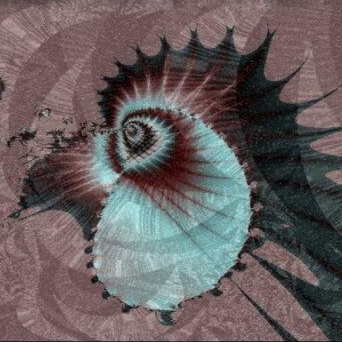Four light years may seem like an unfathomably long distance, but in comparison to the size of our galaxy, it's practically right next door. In fact, it's close enough that the Alpha Centauri system has nearly the same constellations as we do, just subtly warped due to the relatively small parallax factor.
The only caveat is that they're missing the brightest star in Centaurus, having traded it for an additional bright star in Cassiopeia on the opposite side of the sky. The Sun's stellar magnitude is 0.5 from that distance, that's about as bright as Betelgeuse in Orion.
I don't think we'll ever be so lucky that our closest star system just happens to contain a planet with alien life on it. That said, it's so surreal to think about even just the possibility of a life harboring planet orbiting Proxima Centauri. I'm imagining those creatures looking at the Sun in their night sky and wondering themselves about the existence of neighboring aliens.
(To clarify, Alpha Centauri is actually a triple star system close enough together to look like a single star to the naked eye. Alpha Centauri A and B are both sun-like stars with a roughly similar mass and brightness. Proxima Centauri is the nearest of the three, and it's a red dwarf with confirmed planets.)


This is one of my favorite posts on Hexbear. I think I'm tearing up a little. Not just the picture, but also the post, filled with information and hope. Thank you. Hopefully, one day we'll emerge from our prehistory and travel the stars, and meet our stellar neighbors. As you said, it's just 4 light years away. We can make it.
Well the good news is that Proxima has at least one terrestrial planet in its habitable zone, and that planet has a mass of between 1.1 and 1.2 times Earth's mass. It's commonly referred to as Proxima b.
Now the bad news. Yeah Proxima b is in Proxima's habitable zone. But that tells us almost nothing because both Venus and Mars are also considered inside the Sun's habitable zone, albeit at the edges.
On the other hand, just Proxima being a red dwarf poses a lot of unexpected problems for the development of life on Proxima b. Red dwarfs output tiny amounts of heat compared to sun-like stars, so their habitable zone is much closer in proportionately. It's actually kind of impressive: Proxima b orbits Proxima at 1/10th the distance Mercury orbits the Sun. This means Proxima looks absolutely huge from its habitable zone, much, much larger than the sun looks from Earth.
That's crazy considering Proxima's diameter is really only 14% of the Sun's.
At these short distances, tidal effects become huge, and they continuously help bleed angular momentum from the planet until the system reaches equilibrium where the planet is tidally locked to the star. And this process happens fast after formation, within a few million years tops. So Proxima b almost certainly has no day/night cycle. The lit side will be scorched, and the dark side will be frozen. The only suitable area for the development of life would be a thin strip around the planet on the day/night terminator that appears frozen in time.
Another problem with red dwarf stars is that they are somewhat surprisingly extremely, violently active in comparison to sun-like stars. Sometimes the things spontaneously decrease in brightness by 50 percent for months on end, sometimes they become twice as bright as they should be in a matter of minutes. They throw off these massive, dangerous flares and coronal mass ejections far more often than the Sun does, causing planetary magnetospheres to deflect and thereby enable atmosphere loss as charged particles from the stellar wind sand blast the shit out of a planet's unprotected upper atmosphere. And since the distances are so small, there is a much higher chance you get directly hit by such an event.
Unfortunately we probably won't be finding out whether any of this is truly the case for Proxima b any time soon because we don't have instruments capable of gathering any more data from the planet. Usually astronomers use spectroscopy to determine an exoplanet's atmospheric composition. It relies on comparing the star's natural light to that same light after it passes through a planet's atmosphere. Some wavelengths will be missing, and those tell you what chemicals and elements must've been present. Unfortunately that only works if the planet passes in front of its host star from our perspective, and Proxima b's orbit doesn't allow for that. So I'm not sure if pursuing this planet any further would be worthwhile, unfortunately
Thanks for this reply! I love learning stuff like this. Proxima b sounds so freaking cool. Ugh, I wish we could figure it out.